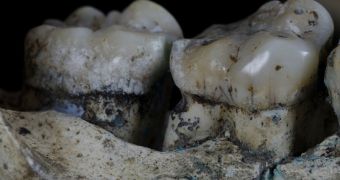According to a new paper published in yesterday's issue of the journal Proceedings of the National Academy of Sciences, it is likely that our ancestors used toothpicks a tad too much and too often for their own good.
Thus, researchers now claim that, according to their investigations, hominids whose remains were unearthed some time ago at the site of Dmanisi in the Republic of Georgia probably had very different jaws from one another due to the fact that each had developed swelling and infections as a result of overusing toothpicks.
Live Science details that the aforementioned fossilized hominids remains are estimated to be about 1.8 million years old.
Ever since they were discovered, scientists have been trying to figure out why the mandibles of these four hominids, whose ages ranged from adolescence to late adulthood, did not resemble one another.
While some theorized that the remains belonged to different hominid species, others argued that the observable differences in the jaws' makeup were merely the result of the fact that some of these hominids were males and others were females.
After comparing these ancient mandibles to others belonging to modern hunter-gatherers in Australia and Greenland, scientists concluded that the Dmanisi remains all belonged to the same species, and that tooth wear was the best explanation for why their jaws looked so different.
Apparently, overusing toothpicks is at least partly to blame for the extensive tooth wear that these hominids experienced during their lifetime.
Specifically, specialists argue that this habit altered both the height and the angle of the hominids' jaws, and that it also affected the shape of the teeth.
“Dmanisi hominids show the first clear case of overusing the toothpick, which led to infection,” Ann Margvelashvili with the University of Zurich's Anthropological Institute and Museum in Switzerland commented on the findings of this investigation.
“The shape of the lesion reflects the shape of the toothpick,” the researcher further detailed.

 14 DAY TRIAL //
14 DAY TRIAL //